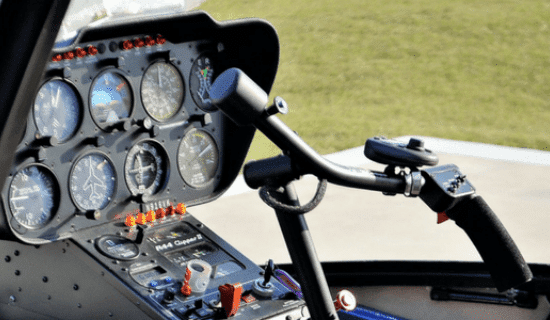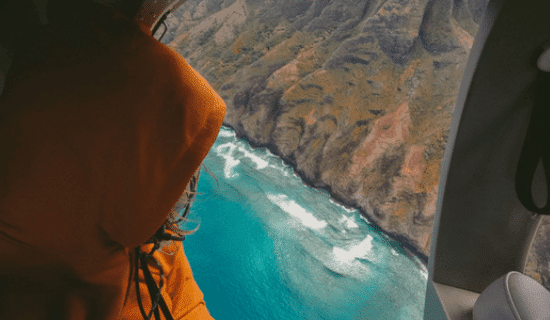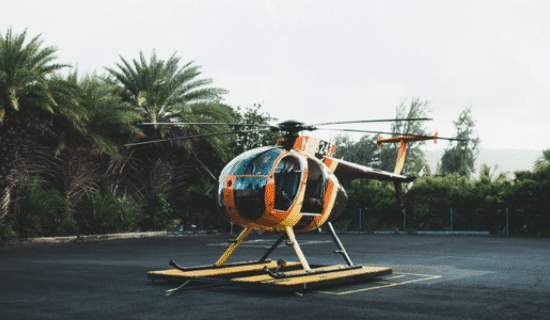Hawaii Helicopter Crash Statistics 2017
Taking a sightseeing tour aboard a helicopter might seem like an essentially harmless adventure, not to mention a thrilling one, especially in a place as ruggedly wild and beautiful as Hawaii. The Hawaiian Islands aren’t the only place where tourists can board a helicopter for a sightseeing trip, of course. Helicopter tour companies are ubiquitous throughout the country, meeting consumers’ demand for unique and unusual experiences. You can get married midair aboard a helicopter or simply fly over a geographical region of interest to gain a bird’s-eye view of the land and vegetation below. Anyone who is made aware of Hawaii helicopter crash statistics, however, may choose to stay safely on the ground.
With the beautiful scenery and stunning cliffs, comes the uneven terrain that can make it difficult for even seasoned pilots to fly and land a helicopter properly. In addition, quickly changing weather, such as fog, unpredictable rain and strong winds, can make it difficult for pilots to determine when the weather will be unsafe to fly. Worse yet, many helicopter tour companies put profit over the safety of others, and improper maintenance is one of the leading causes of helicopter crashes in Hawaii. At least one or a combination of these factors led to a total of 8 helicopter crashes on the Hawaiian Islands from 2015 to 2017, resulting in 18 injuries and 3 fatalities.
Throughout the U.S., there were 121 helicopter accidents reported in 2017 alone. Of these accidents, 20 were fatal, resulting in the deaths of 34 people. While the number of crashes decreased from 2016 to 2017, there were more fatal helicopter crashes in 2017 than in 2016. In 2015, there was 1 crash on June 29th on a Hawaiian Island near Kailua-Kona with no fatalities. In 2016, 6 crashes occurred in Hawaii, 2 of which were fatal, resulting in 3 lives lost. In 2017 on the Hawaiian Islands, seven people lost their lives after being involved in a fatal helicopter crash.
The first fatal helicopter crash took place on August 15, 2017 when 5 Army service members were killed during a night-vision goggle training flight. The U.S. Army Combat Readiness Center issued a report stating that the aircraft took a dive after the pilots experienced “spatial disorientation” 14 minutes into the flight. The UH-60 Black Hawk helicopter entered the water about a mile west of Keana Point. The force of the impact broke the aircraft into multiple pieces, and the 5 crew members perished as a result of multiple blunt force trauma. The passengers were: 1st Lt. Kathryn M. Bailey, Chief Warrant Officer 3 Brian M. Woeber, Chief Warrant Officer 2 Stephen T. Cantrell, Staff Sgt. Abigail R. Milam, and Sgt. Michael L. Nelson.
The second fatal crash occurred on October 16, 2017 on a flight that took off from Oahu’s Daniel K. Inouye International Airport. Jeremy Doessetter and Oliver Kirsch were the two passengers on the Robinson R44 helicopter which crashed two miles off Molokai. Air traffic controllers indicated that the aircraft turned right and then left, falling 300 feet in around 35 seconds, only to ascend 200 feet. Radar contact was lost after the helicopter descended to about 2,700 feet. At 4:00 p.m. on the day of the crash, the National Weather Service forecasted the possibility of strong wind gusts and scattered rain. A search for the missing helicopter was suspended the evening of October 19, 2017 and the two passengers were presumed dead. An air unit from the Maui Fire Department found an uninflated life jacket and red light floating in the ocean nearby. A remotely-operated vehicle found parts of the fuselage on the ocean floor a year later. A report from the National Transportation Safety Board found that there was no evidence of mechanical or heat damage to the recovered engine. Investigators concluded that unexpected changes in wind direction and speed due to heavy rain showers at the time of the crash could haven been a factor in the crash.
These helicopter crash statistics may lead you to wonder if the risks of taking a helicopter tour are higher in Hawaii than elsewhere. What recourse do you have if you or someone you love has been injured or killed in a helicopter crash? Let’s explore the answers to these questions and discuss recent crash data.
Before delving into the frightening reality surrounding other recent Hawaii helicopter crashes, it’s important to note that there is some good news regarding both helicopter safety and general aviation safety. General aviation, which includes helicopters, is included under the umbrella of civil aviation. While experts agree there are many risks associated with civil aviation, fatality rates have been falling steadily for decades worldwide.
Helicopter crash statistics, which are calculated not per trip or takeoff but per 100,000 flight hours, show that the overall helicopter crash rate in the U.S. fell each year from 2013 through 2016, decreasing from 4.95 crashes per 100,000 flight hours in 2013 to 3.19 in 2016. Although helicopter crash statistics show that there was an increase in helicopter accidents from 2016 to 2017 at a rate of 3.55 accidents per 100,000 flight hours, helicopter accident rates in 2017 had declined from what they had been four years earlier.
Despite these efforts, Hawaii helicopter crash statistics from 2017 and prior show there is still much room for improvement. Several recent high-profile helicopter crashes on the islands clearly illuminate the need for significant changes in helicopter tour companies’ maintenance and oversight to improve helicopter safety.
 Six Injured in Kauai Helicopter Crash In 2016
Six Injured in Kauai Helicopter Crash In 2016
In January 2016, a helicopter carrying six tourists took a hard landing on Kalalau Beach on the island of Kauai. The helicopter, a relatively new Airbus EC-130, was operated by Blue Hawaiian Helicopters, a tour company that offers flights throughout the Hawaiian Islands. While the crash did not result in any fatalities, all six passengers suffered injuries, some of them quite severe.
An investigation by the National Transportation Safety Board (NTSB) revealed that the accident occurred after a warning light went on a quarter-mile off Kauai’s north shore, indicating engine failure. The pilot switched the helicopter to auto-rotation in hopes of achieving a softer landing and turned around to return to shore, but ultimately was forced into a rough landing on the beach.
The pilot and two of the passengers experienced only minor injuries, but the other four passengers’ injuries were devastating. One passenger suffered such severe injuries that she had to be airlifted all the way to a hospital in Denver, Colorado, where she remained for several months. She ultimately wound up paralyzed from the waist down due to her injuries.
The family involved in the crash, the Hicks family from Austin, Texas, hired Slack Davis Sanger to spearhead their lawsuit against the company. In the still-pending case, the plaintiffs alleged that the cause of the crash was due to negligence on the part of Blue Hawaiian Helicopters, specifically the company’s failure to detect a faulty fuel line connection, as well as passenger seats that did not function properly on impact.
 Blue Hawaiian Helicopter Crash: 2016 And Past Incidents
Blue Hawaiian Helicopter Crash: 2016 And Past Incidents
The Blue Hawaiian helicopter crash in 2016 on Kauai was not Blue Hawaiian’s first significant helicopter accident. Just over four years earlier, in November 2011, a Blue Hawaiian helicopter carrying five people—the pilot plus four tourists, including a newlywed couple—departed from Maui. It was flying in heavy rain over the island of Molokai when it crashed into a mountainside. The pilot and all four passengers were killed.
As with the 2016 Blue Hawaiian crash, the helicopter involved in the 2011 crash was an Airbus EC-130 that was less than a year old. The NTSB determined the crash had resulted from the pilot’s failure to maintain proper clearance above wooded and mountainous terrain while operating in high winds and heavy rains. Slack Davis Sanger represented the family of one of the crash victims, successfully settling claims on their behalf before the case went to trial.
Prior to the 2011 crash, the most recent fatal Blue Hawaiian helicopter crash had occurred over a decade earlier, in 2000, when a Blue Hawaiian helicopter smashed into a Maui mountainside, killing all seven people aboard. Just as in the case of the 2011 crash, the NTSB ultimately ruled the 2000 crash to have been caused by the pilot’s failure to maintain proper altitude in a mountainous region.
 Safest Helicopter Tours In Hawaii
Safest Helicopter Tours In Hawaii
Even when helicopter accidents aren’t fatal, they can still have quite serious and even tragic outcomes, as in the case of the 2016 Kauai helicopter crash. Smart travelers who are planning to take a Hawaii helicopter tour will do their research beforehand regarding the safety records of tour companies to make an informed decision about the safest helicopter tours in Hawaii.
The Aviation Accident Database section of the NTSB website offers a search function that allows users to filter by state (such as Hawaii) and aircraft type (such as helicopter), as well as by date and other variables. Prospective helicopter tour passengers can also visit tour companies’ websites and read customer reviews and conduct Internet searches on crash information about particular tour companies (for example, “Blue Hawaiian helicopter crashes”) or regions (such as “helicopter crashes on Kauai, Hawaii”) to make a smart choice about which companies to choose. During the course of this research, a consumer might even begin to look for the answer to the question: are helicopters safer than airplanes?
 Hawaii Helicopter Crash Statistics Vs. Other Regions
Hawaii Helicopter Crash Statistics Vs. Other Regions
Hawaii is certainly not the only place where helicopter crashes, including tragic, deadly ones, occur. In March 2018, for example, a helicopter crashed into Manhattan’s East River, where it capsized. All five passengers aboard the flight drowned, imprisoned under the water by the safety harnesses they had been wearing; only the helicopter’s pilot, who had been wearing a different style of harness, survived. Six and a half years earlier, in October 2011—just one month before the deadly helicopter crash in Molokai—another helicopter crashed into the East River, and three of the five people aboard were killed.
Anywhere that helicopters fly, there is a risk of an accident. Statistics show, however, that there are more crashes in the Hawaiian Islands, and more fatal outcomes, than in other parts of the U.S. According to a study conducted by the National Center for Biotechnology Information (NCBI), helicopter crashes in Hawaii have a nearly double risk of fatalities as compared to helicopter crashes in the continental U.S. The NCBI suggests this heightened risk may be due to Hawaii’s unique geographical and meteorological conditions.
No matter where in the world they happen, helicopter crashes that occur during extreme weather or in remote locations far away from an airport have a higher likelihood of being fatal simply because of the resulting delays in rescue and emergency care crews reaching the scene of the accident.
Both of these factors—intense weather and remote geographical locations—are present throughout the Hawaiian Islands, likely contributing to the higher rate of helicopter crash fatalities there. The islands of Hawaii experience fast-changing weather patterns that can quickly obscure a pilot’s vision as clouds or rain move in. Furthermore, Hawaii’s main islands are covered in mountain ranges with peaks that are often shrouded by low-hanging cloud cover.
Fortunately, with each helicopter crash comes fresh knowledge and understanding regarding helicopter safety, maintenance, and oversight. After the 2011 Molokai crash, for example, the FAA proposed establishing a minimum 1500-foot altitude to decrease the risk of helicopters crashing into obscured mountain peaks. The 2018 crash into Manhattan’s East River prompted the FAA to suspend all “doors-off” helicopter flights that utilized restraints that were not quick-release.
Rely on Slack Davis Sanger in Your Time of Need
The caring, experienced attorneys at Slack Davis Sanger specialize in aviation law and keep abreast of helicopter crash statistics, as well as helicopter safety requirements. Our lawyers have tried or settled aviation cases in 47 different states, which has helped earn our firm a national reputation for pursuing these types of cases. If you or someone you know has been injured in a helicopter or other aviation accident, call us. We will review your case at no charge, and if you have a case, we will do our best to ensure you are justly compensated for your loss.

The firm handles cases involving catastrophic personal injuries and deaths. Our work spans three decades of handling airplane and helicopter crashes, truck and car accidents, oilfield and construction accidents, and other devastating accidents. We try lawsuits throughout the country in both federal and state courts and have recovered hundreds of millions of dollars for our clients. To date, we have handled or tried cases in 47 states, read more about our attorneys and firm.
